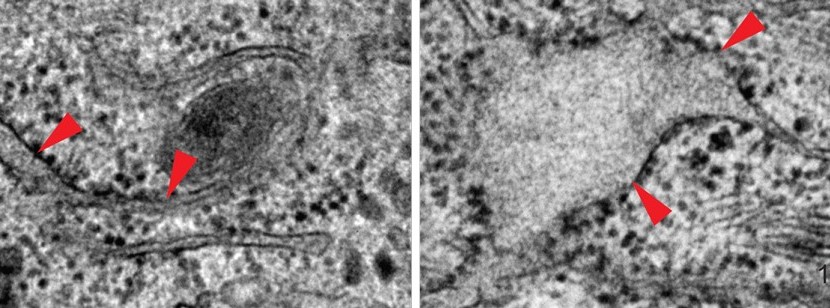Researchers of the Institut du Cerveau – ICM institute just discovered a new causative gene implicated in hereditary spastic paraplegias opening new perspectives of therapeutical research.
Hereditary spastic paraplegias (HSPs) are clinically and genetically heterogeneous neurological disorders characterized by gait difficulties due to spasticity (muscular rigidity). Giovanni Stevanin is leading an INSERM / EPHE team at the Institut du Cerveau – ICM institute (Director Alexis Brice) and has been studying for several years the genetic and physiopathological mechanisms implicated in these diseases. Giovanni Stevanin and his collaborators already identified several genes implicated in HSPs and they are publishing today a paper highlighting a new causative one: REEP2.
The REEP2 gene codes for a protein of the endosplasmic reticulum, a continuous network of intracellular membranes implicated in various functions, including protein and lipid synthesis as well as membranes production. Frederic Darios, INSERM researcher who recently obtained funding from the « European Research Council », is focusing his research on the role of the endoplasmic reticulum in neurodegenerative diseases.
Associated efforts of both researchers and their collaborators from the SPATAX network (coordinator: Alexandra Durr ; http://spatax.wordpress.com/) led to the identification of mechanisms underlying HSPs symptoms linked to REEP2. Indeed, mutations in REEP2 gene impaired the association of the REEP2 protein with endoplasmic reticulum membranes leading to disorganization of this intracellular structure. REEP2 joins the list of genes linked to HSPs and implicated in endoplasmic reticulum functions, emphasizing the important implication of this intracellular network in the physiopathology of HSPs. Researchers now focus on the understanding of the link between endoplasmic reticulum and neurodegeneration to consider new therapeutic strategies for multiple HSPs forms.

Pictures of fibroblasts obtained from healthy subject or patient with mutation in REEP2 gene (transmission electron microscopy). The endoplasmic reticulum (red arrows) appears to be dilated in cells obtained from patient compared to healty subjet fibroblast. Credit: Marie-Paule-Muriel/ Frédéric Darios (INSERM).
References (authors of the Institut du Cerveau – ICM are in bold caracters) : Esteves T, Durr A, Mundwiller E, Loureiro J, Boutry M, Gonzalez MA, Gauthier J, El-Hachimi KH, Depienne C, Muriel MP, Acosta Lebrigio RF, Gaussen M, Noreau A, Speziani F, Dionne-Laporte A, Deleuze JF, Dion P, Coutinho P, Rouleau GA, Zuchner S, Brice A, Stevanin G#, Darios F# (# co-last authors). Loss of association of REEP2 to membranes leads to hereditary spastic paraplegia. Am J Hum Genet 2014 (advance online January 2, 2013).







